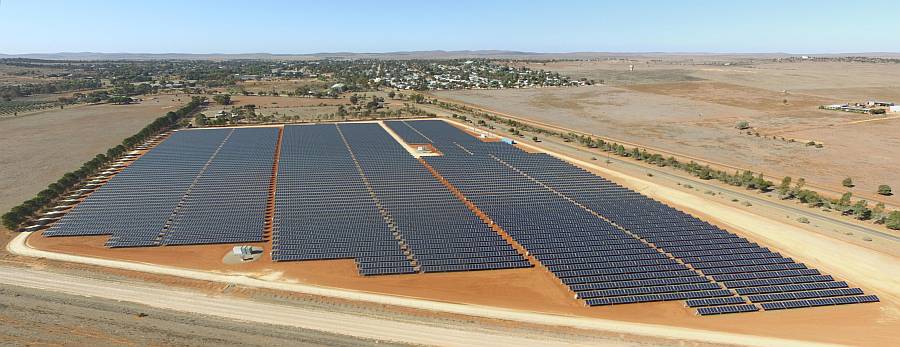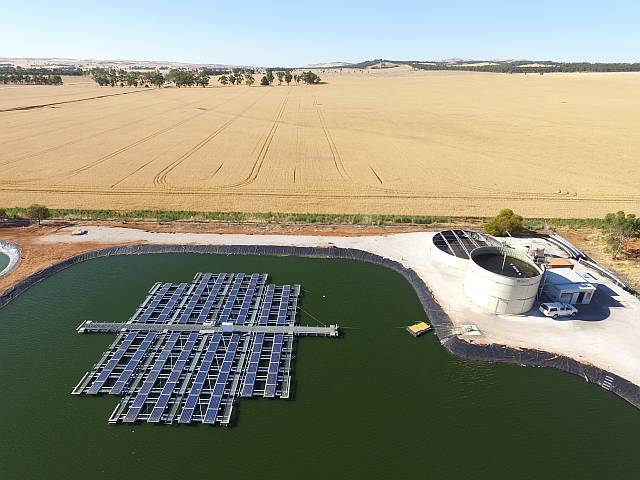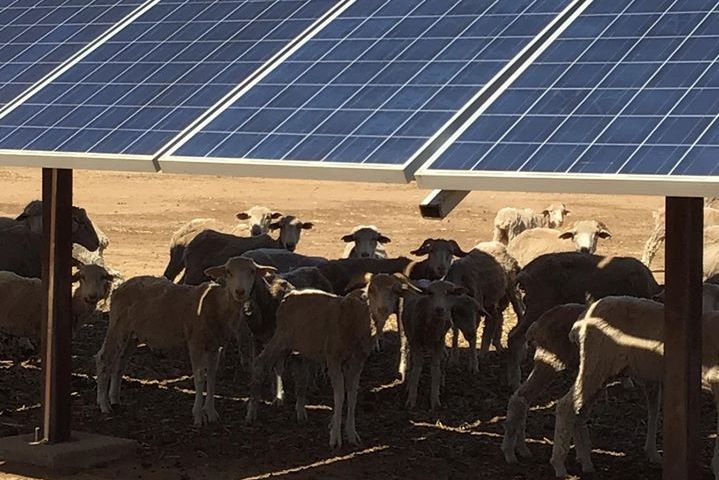Currently the most common example of a secondary use of solar panels is in the provision of shade, mainly for car parks.
Another secondary use of solar panels is to float them on water in order to reduce evaporation from water bodies. This can have another value in reducing the temperature of the panels, increasing their efficiency.
Another potential use of solar PV panels is for Heating: collecting the heat from solar panels and putting it to use; again increasing the efficiency of the panels by reducing their temperature.
|
|
Amy Feldman wrote an article for Forbes on 2022/01/03 about integrated solar roofing produced by GAF, a big roofing provider in the USA.
Agrivoltaics (or agrisolar), combining solar panels with agriculture
| ||||
|
Some shade can be advantageous for many crops in Australia. Partial shade lowers temperatures and conserves soil moisture.
And shade is greatly appreciated by sheep on hot days. (Shade is often not provided for livestock in some farming areas in Australia's hot climate; this is unethical.) Shade for stock could be provided by solar panels in some places.
I would go so far as suggesting that all large solar farms should have provision for grazing (or some other form of farming) in combination with the solar panels. Not only would it increase productivity, it would be better for the soil than having the earth beneath the panels bare.
|
|
Grapes under solar panels
Growing wine or table grapes beneath solar panels has the advantage of limiting frost damage, reducing heat stress and conserving soil moisture. However, it also reduces access to machinery for spraying and harvesting.
Are protective solar panels the future for French vineyards?
Bare ground under solar panels
The two photos below are of a 4.9MW solar farm at Peterborough in northern South Australia. At the time I took the photos (May 2018) the solar farm was new. The ground was, as can be seen, absolutely bare. There was no indication that anything had been planted.If the ground is to be kept bare, I wonder how that is going to be done? By regular use of herbicides? This cannot be good for the soil or the local environment.
Peterborough Solar Farm
|
|---|

|
|
Photo taken with my drone, 2018/05/12 |

|
|
Photo taken from ground level, 2018/05/10 |
Surely it would be more environmentally sound to use some sort of agrisolar implementation? At least plant some sort of low growing fodder plant and graze sheep in among the panels?
|
|
External pages on agrivoltaics
Related pages on general solar integration is below
Australian Guide to Agrisolar for Large-scale Solar, for proponents and farmers; Clean Energy Council, March 2021, pdf, 48 pages.Includes sections on:
- Guidance for Solar Grazing and
- Other Emerging forms of Agrisolar, including:
- Horticulture;
- Biodiversity and Bees;
- Floriculture;
- Aquaculture;
- Viticulture;
- Resources.
French company Neoen have a page about agrisolar at their Numurkah Solar Farm in Victoria. It includes an informative video that discusses how merino wethers are grazed beneath and around the panels. The land owner claims that the land has been made more productive by the presence of the panels. Neoen is one of the biggest wind and solar energy developers in Australia.
Combining Solar Panels With Agriculture Makes Land More Productive, Clean Technica, written by Steve Hanley, 2017/11/24.
Growing Crops Under Solar Panels? Now There’s a Bright Idea"
"In the new scientific (and literal) field of agrivoltaics, researchers are showing how panels can increase yields and reduce water use on a warming planet.A related page: Why combining farms and solar panels could transform how we produce both food and energy.
In Jack's Solar Garden in Boulder County, Colorado, owner Byron Kominek has covered 4 of his 24 acres with solar panels. The farm is growing a huge array of crops underneath them—carrots, kale, tomatoes, garlic, beets, radishes, lettuce, and more. It’s also been generating enough electricity to power 300 homes. “We decided to go about this in terms of needing to figure out how to make more money for land that we thought should be doing more,” Kominek says."
Australian solar park to host crops as part of agrisolar program; PM Magazine article, written by David Carroll, 2021/06/11. "Italy’s Enel will launch an experimental agrivoltaics program at its 34 MW Cohuna Solar Farm in the Australian state of Victoria to help formulate a “best practices” template for utility-scale solar PV sites in other countries."


